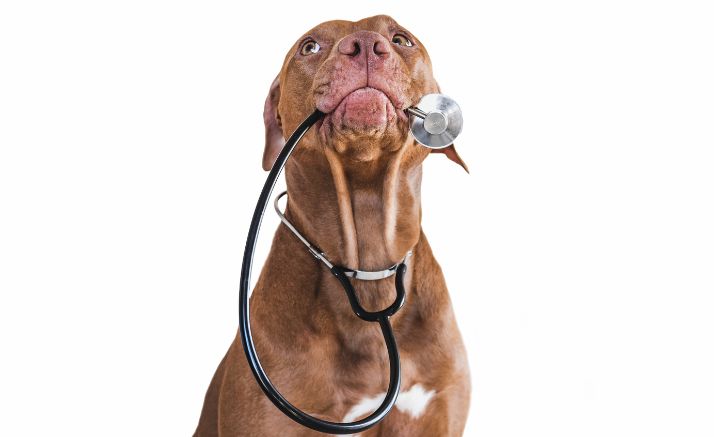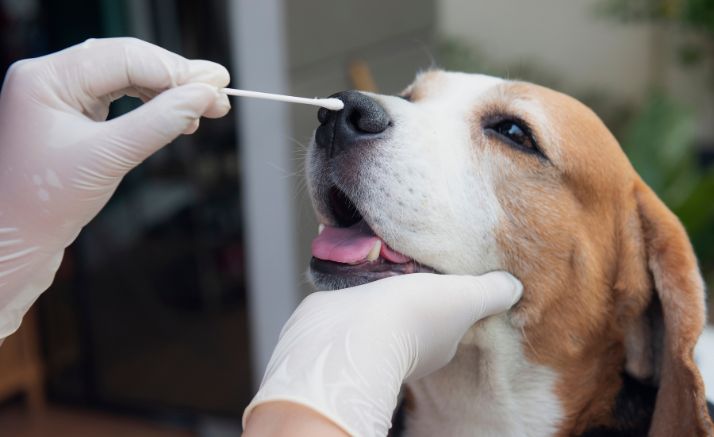Welcoming a pet into your home is not just an adoption; it’s a heartwarming embrace of a bundle of joy. Pet health becomes an immediate focus for us, as responsible pet parents, ensuring the well-being of our furry friends takes precedence. In this comprehensive guide, we’ll delve into common health issues in dogs and cats, shedding light on preventative measures and tips for maintaining optimal pet health.
Identifying Signs of Good Pet Health
Begin by understanding what signifies good health in your pets. A shiny coat, clear eyes, and a lively demeanour are indicators of a happy and healthy companion. Pay attention to:
Physical Appearance:
- A well-groomed coat serves as a visual indicator of a pet’s overall health. Regular brushing not only keeps their fur shiny but also helps identify any unusual lumps, bumps, or skin conditions.
- Bright and clear eyes are windows to your pet’s soul, and they also provide valuable insights into their health. Cloudiness or changes in eye colour may indicate the need for a veterinary check-up.
- Obesity can lead to a myriad of health problems, so regularly check their body condition and adjust their diet and exercise accordingly.
Energy Levels:
- A happy and healthy pet is an active one. Pay close attention to your pet’s energy levels – a playful and enthusiastic demeanour is a positive sign.
- Regular exercise not only helps maintain their physical health but also contributes to mental stimulation.
Appetite:
- A consistent and healthy appetite is indicative of a content and thriving pet.
- Monitor their eating habits for any sudden changes, such as a loss of interest in food or excessive hunger.
Common Health Issues in Dogs and Cats
Understanding potential health issues is crucial for early intervention. Here are some common ailments affecting our four-legged friends:
Digestive Problems: Digestive issues are not uncommon in pets and can manifest through symptoms like vomiting, diarrhoea, or changes in appetite. These issues may arise due to dietary indiscretions, food allergies, or underlying health conditions. To promote digestive health, provide a well-balanced diet, avoid sudden dietary changes, and consult your vet if you notice persistent gastrointestinal problems.
Dental Issues: Dental health is often overlooked but plays a pivotal role in overall well-being. Dental problems, such as gum disease and tooth decay, can lead to more severe health issues if left untreated. Incorporate regular teeth brushing into your pet care routine, offer dental treats or toys, and schedule professional dental cleanings to maintain optimal oral health.
Parasites: Fleas, ticks, and worms can pose significant threats to your pet’s health. Parasites
not only cause discomfort but can also transmit diseases. Implement a regular parasite prevention plan, including the use of vet-recommended medications, routine grooming, and keeping your pet’s living environment clean. Promptly address any signs of infestation, such as excessive scratching or changes in behaviour.
Obesity: Overweight pets face an increased risk of various health issues, including diabetes, arthritis, and cardiovascular problems. The primary culprits are often overfeeding and a lack of exercise. Maintain a balanced diet tailored to your pet’s needs, avoid excessive treats, and ensure they engage in regular physical activity to prevent obesity-related complications.
How to Find if Your Pet Has Health Issues
Detecting health issues early is crucial for effective treatment. Look out for these signs:
Behavioural Changes: Pets are creatures of habit, and any sudden alterations in behaviour can be indicative of underlying health issues. Keep an eye out for changes in temperament, such as increased aggression, excessive restlessness, or withdrawal. These behaviours might signal pain, discomfort, or anxiety. If your usually sociable pet becomes unusually aloof or vice versa, it’s a signal to investigate further.
Changes in your pet’s interactions with family members, other pets, or their environment can also be telling. Be attentive to any signs of distress or reluctance to engage in activities they usually enjoy. Sometimes, behavioural changes may precede physical symptoms, making it essential to address them promptly.
Changes in Eating Habits: A pet’s relationship with food can be a direct reflection of their health. Pay close attention to their eating habits, as sudden changes may indicate underlying issues. A loss of appetite could be a sign of dental problems, gastrointestinal distress, or even emotional stress. Conversely, an increase in hunger might point to metabolic issues or the presence of parasites. Regularly monitor your pet’s food intake, and consult with your veterinarian if you notice any significant deviations.
Visible Symptoms: Regularly conduct physical examinations of your pet to identify any visible symptoms of health issues. Check for skin conditions, lumps, bumps, or changes in fur texture. Run your hands over their body to detect any abnormalities or discomfort. Be attentive to any signs of pain, such as limping or difficulty moving.
Prevention Strategies for Optimal Pet Health
we’ll delve into proactive measures aimed at ensuring the well-being of your furry companions. These strategies, grounded in the principles of responsible pet ownership, encompass various facets of daily life, from nutrition to routine veterinary care.
Balanced Nutrition for Robust Pet Health:
Importance of a Well-Balanced Diet: Providing your pets with a nutritionally balanced diet is fundamental to their overall health. Ensure that their meals meet their specific dietary needs based on factors such as age, breed, and health conditions.
Choosing the Right Pet Food: With an array of pet food options available, it’s crucial to select products that align with your pet’s nutritional requirements. Look for high-quality ingredients and consult your veterinarian for personalized dietary recommendations.
Dietary Considerations for Specific Breeds: Different breeds may have unique dietary considerations. Understanding these nuances helps tailor your pet’s diet to their specific needs, promoting optimal health.
Regular Exercise Promotes Pet Health:
Tailoring Exercise Routines: Dogs and cats have varying exercise requirements. Tailor your pet’s exercise routine to their breed, age, and energy levels. Engage in activities that keep them physically active and mentally stimulated.
Outdoor Activities for Dogs, Indoor Play for Cats: Dogs often benefit from outdoor walks, playtime, and social interactions. On the other hand, indoor play, interactive toys, and climbing structures contribute to a cat’s physical and mental well-being.
The Role of Mental Stimulation: Mental stimulation is an integral part of pet health. Provide puzzle toys, engage in training sessions, and create an enriching environment to keep your pets mentally engaged and happy.
Routine Vet Check-ups for Comprehensive Pet Health:
Significance of Regular Veterinary Visits: Regular veterinary check-ups are essential for monitoring your pet’s health and detecting potential issues early on. Schedule routine visits to discuss vaccinations, preventive medications, and any concerns you may have.
Vaccinations and Preventive Medications: Keeping vaccinations up to date is crucial in preventing infectious diseases. Additionally, discuss and administer preventive medications to safeguard against parasites such as fleas, ticks, and worms.
Detecting Health Issues Early: Regular vet visits enable early detection of health issues. Your veterinarian can conduct thorough examinations, and screenings, and guide you on maintaining your pet’s health.
Hygiene Practices for Optimal Pet Health:
Grooming Tips for Different Breeds: Grooming needs vary among breeds. Learn about your
pet’s specific grooming requirements, including brushing, nail trimming, and ear cleaning. Regular grooming not only enhances their appearance but also contributes to their overall well-being.
Bathing Frequency and Grooming Tools: Determine the appropriate bathing frequency for your pet’s coat type. Use suitable grooming tools to keep their fur in good condition and prevent matting. Proper hygiene practices contribute to a healthy and comfortable pet.
Maintaining a Clean Living Environment: A clean living environment is vital for your pet’s health. Regularly clean and sanitize their living spaces, wash bedding, and ensure that food and water bowls are kept clean to prevent the spread of diseases.
In the grand tapestry of pet parenthood, safeguarding your furry companions’ health is paramount. By staying informed and implementing preventive measures, you’re not just a pet parent; you’re a guardian of their well-being. Remember, the journey of pet health is a shared one, filled with love, laughter, and the occasional furry escapade.











